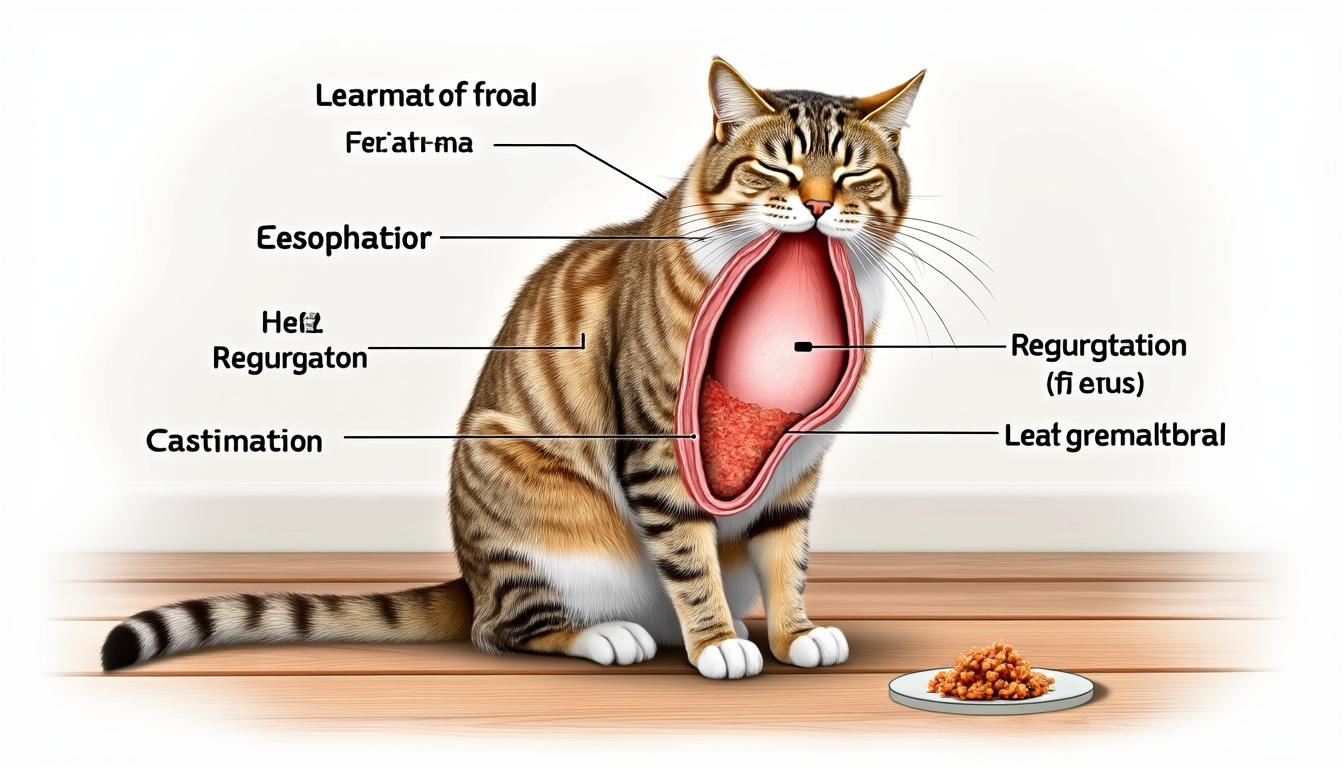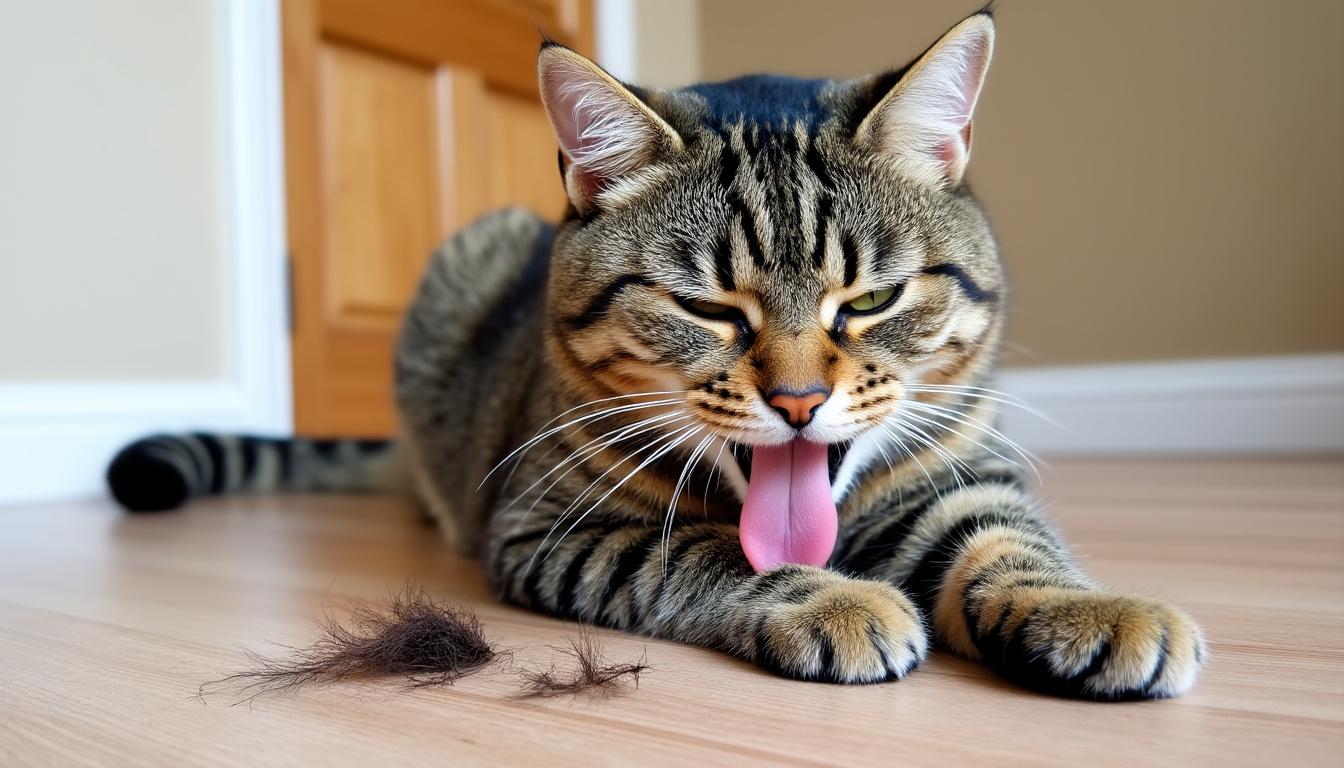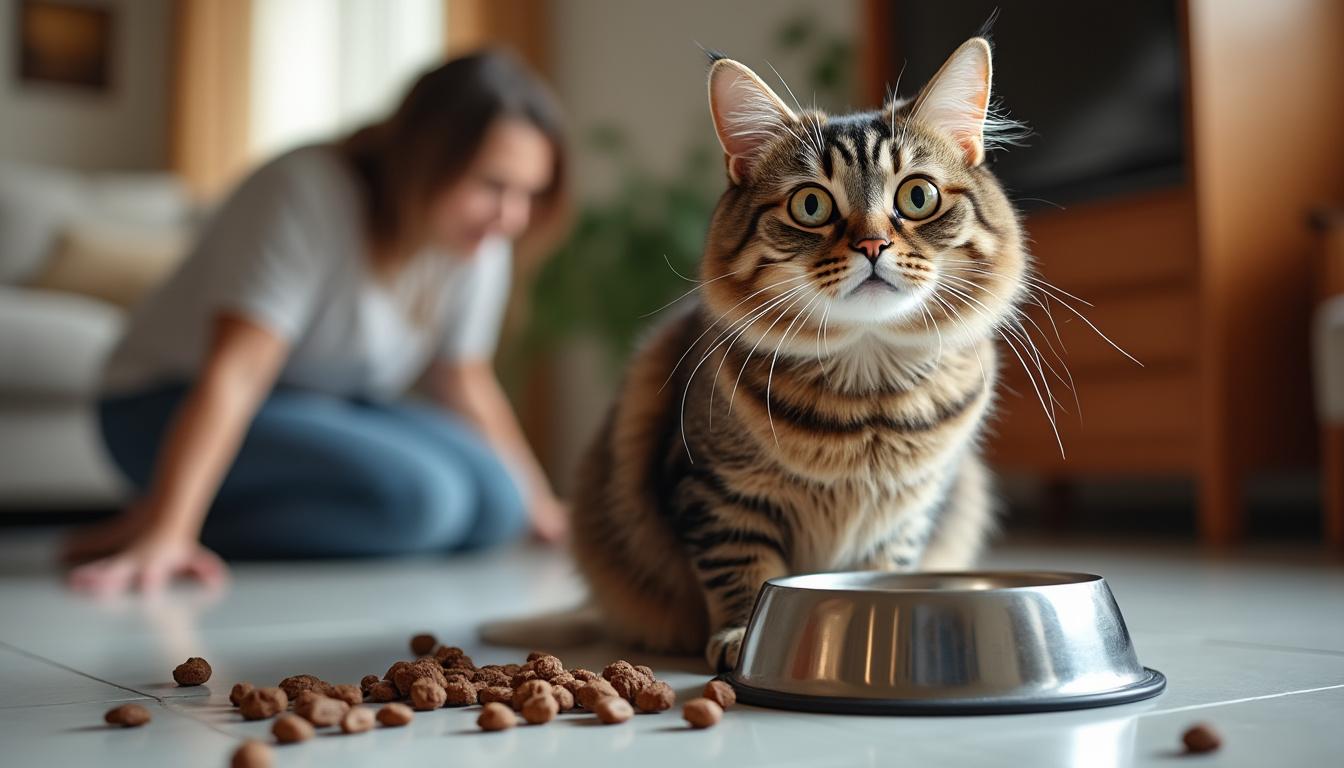When your beloved feline companion starts healthy yet ends up leaving you a little gift of vomit after each meal, it can be an unsettling experience. Every cat parent knows the struggle of trying to decipher the reasons behind their furry friend’s occasional digestive mishaps. Is it something serious? Is it just a quirk of their eating habits? Or could it be something completely harmless? Understanding why your cat throws up after eating is essential for ensuring their health and well-being. Let’s dive into the nitty-gritty!
Brief
- Speed Eating: Cats sometimes eat too quickly, which can lead to regurgitation. 🍽️
- Overeating: If your cat struggles to know when to stop, it can lead to vomiting. ⚠️
- Food Sensitivities: Certain ingredients may cause an upset stomach. 😿
- Hairballs: Regular grooming may help reduce the number of hairballs. 🐾
- Stress: Changes in environment can upset your cat’s tummy too. 😟
Decoding Vomiting vs. Regurgitation in Cats
First things first, let’s break down the difference between vomiting and regurgitation. Most pet parents might not even be aware this distinction exists, but it’s crucial. Your vet will likely pose this question when you bring your furry friend in for a check-up. Regurgitation and vomiting have distinct characteristics that can guide your vet in diagnosing the problem correctly.
Regurgitation is generally an accidental spill of undigested food shortly after eating. Here’s what you should know:
- Occurs shortly after eating (within minutes)
- No gagging or retching; food just simply “falls out” without warning.
- The food often appears whole and undigested, maybe with a thin film over it.
On the other hand, vomiting comes with warning signs:
- Begins with lip licking, drooling, pacing, or restlessness.
- Often involves a gagging or heaving motion before the food is expelled.
- The expelled contents are usually partially digested and may include bile or foam.
Identifying whether your cat is vomiting or regurgitating will greatly help your vet find the root cause. It can distinguish between problems related to the stomach or esophagus, food reactions, and other health concerns.

The Timing of Your Cat’s Vomiting
Keep an eye on the clock when your furry buddy decides to upchuck. The timing can reveal a lot about the potential problem. Tracking how long it takes from eating to vomiting may help you and your vet distinguish between various possibilities.
| Timing | Possible Causes | What to Do |
|---|---|---|
| 0-10 minutes | Eating too fast, megaesophagus | Try slow feeders. |
| 20-60 minutes | Hairballs, food allergies, gastritis, inflammatory bowel disease | Consult your vet for dietary advice. |
| Hours later | Parasites, kidney or liver diseases, cancer | Veterinary examination is crucial. |
Common Reasons Cats Throw Up After Eating
So, why do cats sometimes become little involuntary fountains of food? Let’s explore the most common reasons that could be leading to this behavior. Getting to the heart of the matter often requires a bit of investigation!
1. Speed Eating: When Every Meal is a Marathon
Have you ever watched your cat devour their food in record time? If Bammy, my Tabby, is any indication, they tend to eat like they’re in a competition. Fast eaters may not chew enough and can inhale air alongside their food. This air can travel down the esophagus and lead to regurgitation. 🏃♂️💨
Here are some tips to slow down their eating:
- Purchase a slow feeder bowl or a puzzle feeder.
- Serve smaller portions spread throughout the day.
- Add moisture to dry food to help with chewing.
- Separate multiple cats during feeding times to lessen food competition.
2. Overeating: The Dangers of Too Much Food
Sometimes, picky eaters may wolf down their food when they sense they might not get a second helping. Overeating can happen, especially in multi-cat households. 🐱🐱
Signs that your cat might be overeating include:
- Regurgitating immediately after devouring a large meal.
- No other apparent health symptoms.
- Normal energy levels and stool quality.
3. The Hairball Conundrum
Ah, the hairball. It’s almost a rite of passage for cats! Hairballs can block the stomach or intestines, leading to throwing up. If you’ve noticed fur mixed in with the vomit, it’s likely hairballs at play. Ensuring regular grooming can help mitigate this issue. 🐾
Ways to combat hairballs:
- Brush your cat daily, especially during shedding seasons.
- Look for specialized foods designed to reduce hairballs.
- Incorporate a hairball gel into their diet.
- Add fiber to their food for easier passage of hair.

4. Food Sensitivities or Allergies
If your cat consistently throws up after meals, they might not like what they’re eating. Food allergies or intolerances to proteins like chicken or beef are quite common among cats. Signs to look for include:
- Vomiting 30-60 minutes after meals.
- Soft stools or diarrhea existing alongside vomiting.
- Signs of itching or irritability.
Steps to address this issue include:
- Trying a limited ingredient diet
- Testing novel protein sources like duck or rabbit.
- Consulting your vet for a food trial.
5. Stress & Anxiety
Believe it or not, your cat’s emotional health can influence their physical health too! Changes in the household or environment—like new pets or moving—can upset their tummy. Signs they might be stressed include vomiting at the same time daily or sudden clinginess. 🐾💔
To help alleviate stress:
- Create quiet feeding spaces away from disturbances.
- Establish a routine.
- Consider using calming oils or sprays with your vet’s approval.
When to Seek Veterinary Help for Cat Vomiting
If your furry friend’s vomiting becomes persistent or if you notice unusual symptoms, it’s time to reach out to your veterinarian. Chronic vomiting can lead to dehydration and further health complications if left unaddressed. Signs to be vigilant about include:
- Vomiting more than once per week.
- Showing lethargy, weakness, or a decrease in appetite.
- Presence of blood in the vomit.
Preparing for the Vet Appointment
When your cat is experiencing persistent vomiting, it helps to be prepared for your vet visit.
- Keep a log of vomiting episodes (dates, times, and appearance).
- Bring along pictures or videos of the vomit.
- List any recent changes in diet, environment, or routines.
Should I be worried if my cat vomits right after eating?
If it happens occasionally, it may not be serious. However, if vomiting happens often, especially consistently, definitely consult your vet.
Can dry food cause vomiting?
Yes, especially if cats eat too quickly or have a sensitivity to certain ingredients in the kibble.
What can I do if my cat keeps throwing up?
Several quick fixes include using slow feeders, changing feeding locations, and checking with your vet for dietary changes.
Do cats throw up more as they get older?
Not necessarily, but older cats can have more health problems that may lead to vomiting.
Can stress cause vomiting in cats?
Yes, stress can lead to physical symptoms, including vomiting, as it affects their overall health.

